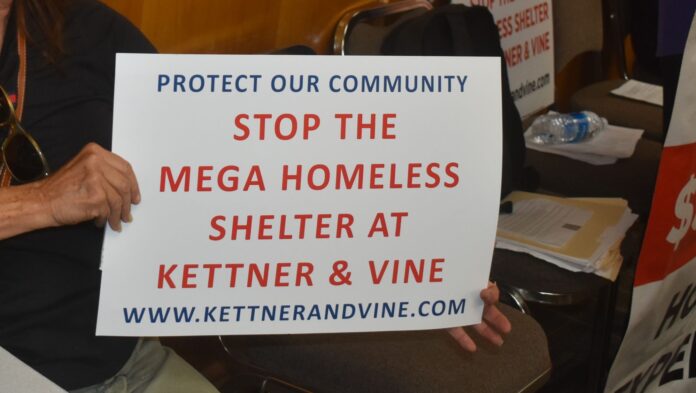
By Macy Meinhardt, Voice & Viewpoint Staff Writer
As regional leaders scramble to take action on the growing homeless emergency, San Diego City Council voted 8-0 to renew a Shelter Crisis Declaration.
“Emergencies require emergency action,” said Council President Sean Elo-Rivera, expressing support to use “every possible tool to address homelessness ”
Declaring the crisis means that certain city codes and requirements are waived or loosened in order to expedite the process of securing shelter options. Currently, 10,605 individuals are living without a home throughout San Diego County; most of which are without shelter and are concentrated in the City of San Diego. Facing a critical loss of shelter space by the end of the year, and a stalled proposal to merge the beds into a 1,000 bed mega-shelter in Middletown, councilmembers are racing against time to enact solutions that are both feasible and one that everyone can agree on.
“The entire homelessness crisis can be summed up in five words: ‘do something, but not that’,” said District 3 Councilmember Stephen Whitburn.
The Homeless Strategies and Solutions Department says that declarations “allows the City to efficiently and strategically address issues of public health, homelessness, and housing.” Which means the city has authority to:
- Suspend provisions of state and local law prescribing standards of housing, health, or safety.
- Adopt reasonable local standards for the design and operation of shelters.
Council President Pro-Tem, Joe LaCava, in support of the declaration, describes existing provisions as “strings, red-tape, and bureaucracy,” that get in the way of the city’s ability to timely deliver critical services on homelessness, such as securing shelter sites.
The declaration has been ongoing since 2018, the most recent one being renewed in Feb. 2022. Within this time frame, a notable action item that has been put forward is Mayor Todd Gloria’s proposed 1,000-bed consolidated shelter on Kettner and Vine. Mayor Gloria himself described the proposal as bold, costing $30 million in public dollars annually, and a $18 million investment in renovations to make the 65,000 sq ft warehouse livable.
The proposal has gathered public scrutiny from the moment the plans were announced in April. Put in front of City Council last week, all nine councilmembers rejected Gloria’s proposal, with two, Councilmember Kent Lee, and Councilmember Vivian Moreno, voting no altogether. The remaining councilmembers voted on the condition that the mayor re-enter negotiations with the warehouse owner and return with improved lease terms in September.
Issues of health, safety, and housing provisions of the mega-shelter made up a lot of the concerns brought forward by the community and councilmembers. These provisions are all objectives the city can suspend under a shelter crisis declaration.
For example, during council discussion on the proposed shelters lease terms, District 5 Councilmember Marni Von Wilpert, brought up the difficulty of agreeing to sign a lease without having full access to the buildings inspection record, and the status on whether or not the building clears a in-door air hazardous material test such as lead or asbestos.
“I will not be voting on anything if I can’t read the entire book. Because it is not just a list of things that have to be done. It’s an entire other contract,” said Von Wilpert.
Meanwhile, as the mayor resumes negotiations with the warehouse owner, the impending closure of eight shelters by January further intensifies pressure on city leaders to resolve the issue. The City maintains that most of these shelters were always intended to be semi-permanent, however, now creates a need for a replacement of 1,602 beds.

List of shelters closing by end of year. PHOTO: Homeless Strategies and Solutions Department
Because of the impending loss of beds, Council President Rivera argues that a Declared Shelter Crisis shelter is not urgent enough, and instead advocated for a State of Emergency Declaration.
The exact definition of a State of Emergency is: “a condition of extreme peril to persons or property proclaimed as such by the governing body of the local agency affected by a natural or manmade disaster.” The declaration would further expand the opportunity to enact policies that normally would not be permitted or would have to go through a lengthy approval process.
Rivera referred to successes from other metro cities who have initiated a State of Emergency, such as Los Angeles. Data shows that one year into their state of emergency, their rate of homeless individuals being put into housing increased by 18% and created a time savings of at least six months.
“I don’t know that we’re using every tool available and I think that we should, and want to make sure that there are no unnecessary impediments standing in the way,” said Rivera.
With six months until the mass closure, Sarah Jarman, Director of the City’s Homeless Strategies and Solutions, affirmed to council that her team, along with the San Diego Housing Commission, have established a study group to identify new stand up shelter sites they can acquire quickly in the meantime.



